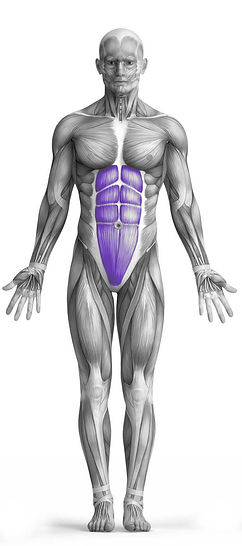Seated Barbell Twist 101 Video Tutorial
0

Exercise Synopsis
Target Muscle Group
Abs
Secondary Targets
None
Execution
Isolation
Force Type
N/A
Required Equipment
Barbell
Fitness Level
Beginner
Variations
None
Alternatives
None
Timer
Hour
Minute
Second
Stopwatch
00:00:00:00
Overview
The Seated Barbell Twist is an effective exercise targeting the abdominal muscles, specifically the obliques, to improve core strength and rotational stability. Performed while seated, this exercise isolates the abs by minimizing lower body involvement, ensuring maximum focus on the core. To execute, you sit on a flat bench with a barbell placed across your shoulders, holding it securely with both hands. Keeping your back straight and core engaged, you twist your torso to one side, then rotate to the other, maintaining controlled movement throughout. The Seated Barbell Twist is ideal for enhancing core definition and rotational strength, requiring only a barbell for setup.
How to Perform
Position a lightweight barbell securely across your upper back, ensuring it rests on the muscles below your neck to avoid any direct pressure on your spine.
Sit on a flat bench with your feet planted firmly on the ground, positioned slightly wider than shoulder-width apart for stability.
Maintain an upright posture with your back straight and your core muscles fully engaged to support your spine throughout the movement.
Begin twisting your torso slowly to one side, aiming to rotate as far as your flexibility allows, while keeping your head facing forward and avoiding unnecessary neck movement.
Gradually return to the center and repeat the motion to the opposite side, maintaining a smooth and controlled pace.
Focus on controlled breathing during the exercise, exhaling as you twist and inhaling as you return to the center.
Avoid using momentum or jerking motions to enhance the effectiveness of the exercise and reduce the risk of injury.
Perform the exercise for a specific number of repetitions on each side, or for a set duration, ensuring equal effort is applied to both sides.
Tips
Maintain a forward-facing head position throughout the movement, avoiding any side-to-side turning to keep your neck aligned and reduce strain.
Engage your abdominal muscles consistently from start to finish, ensuring they remain activated to maximize core involvement and stability.
If you’re using an Olympic barbell, check that your workout area has sufficient space to accommodate the full length of the bar safely and comfortably.
How Not to Perform
Avoid Resting the Barbell on Your Neck
Ensure the barbell is placed on the muscles of your upper back, not directly on your neck, to prevent discomfort and potential injury to your spine.
Do Not Use Momentum
Avoid jerking or swinging your torso to twist; focus on slow, controlled movements to engage the obliques effectively and prevent strain on your lower back.
Don’t Let Your Back Slouch
Maintain an upright posture throughout the exercise. A rounded back can reduce core engagement and increase the risk of injury.
Avoid Twisting Your Head
Keep your head facing forward and aligned with your spine. Turning your head with the twist can strain your neck and reduce focus on the target muscles.
Don’t Neglect Core Engagement
Failing to keep your core tight will shift the load away from the obliques and place unnecessary stress on your lower back.
Don’t Over-Twist
Twisting too far can lead to hyperextension or strain in your lower back. Rotate only within your comfortable range of motion.
Avoid Using a Barbell That’s Too Heavy
Using excessive weight can compromise your form, reduce control, and increase the risk of injury. Start with a light barbell and increase weight gradually.
Don’t Let Your Feet Shift
Keep your feet firmly planted on the floor to maintain stability and avoid unnecessary movement that could throw off your balance.
Avoid Rushing Through Reps
Performing the exercise too quickly reduces its effectiveness and increases the likelihood of improper form. Take your time with each twist.
Ensure Adequate Space
If using a long barbell, make sure there’s enough room around you to avoid hitting objects or people, which could disrupt your focus or cause accidents.
Variations
Variations of fitness exercises refer to different ways of performing a specific exercise or movement to target various muscle groups, intensities, or goals. These variations aim to challenge the body differently, prevent plateaus, and cater to individuals with varying fitness levels.
Alternatives
Alternative exercises in fitness refer to different movements or activities that target similar muscle groups or serve the same training purpose as the primary exercise. These alternative exercises can be used as substitutes when the original exercise is unavailable or challenging to perform due to various reasons such as equipment limitations, injuries, or personal preferences.



